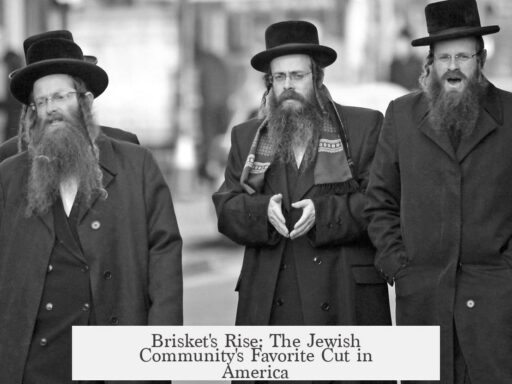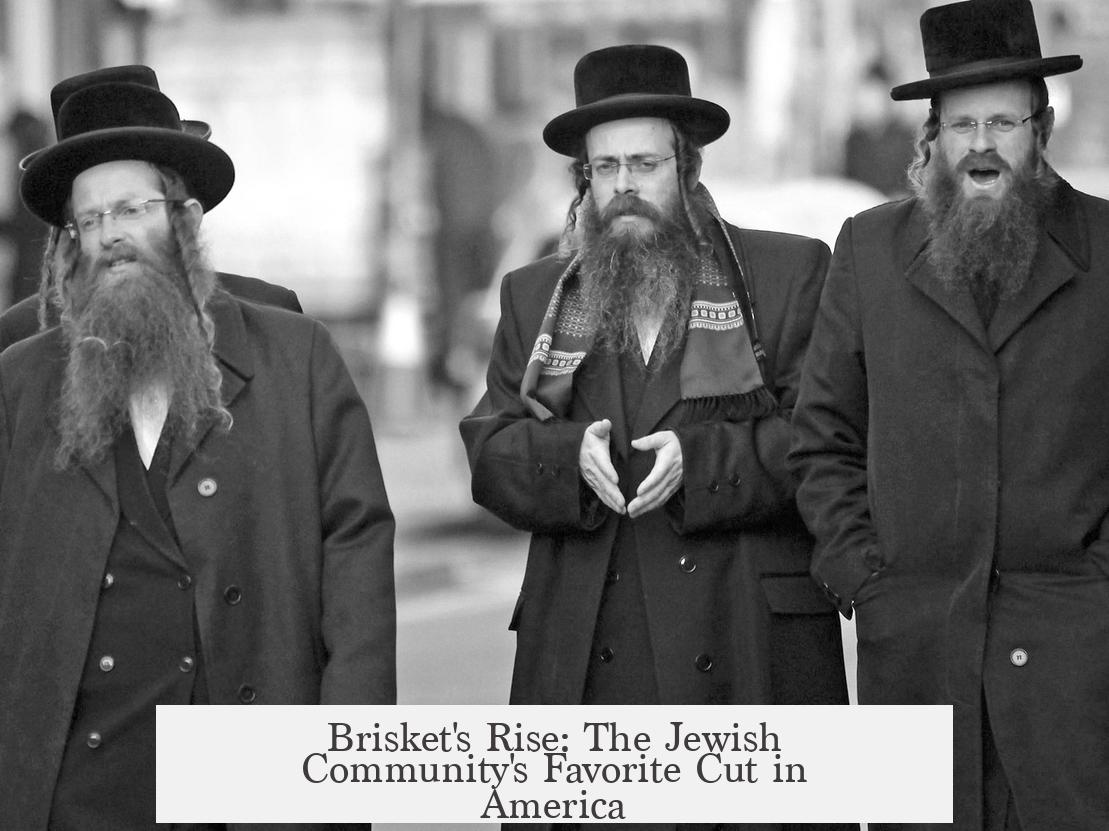Brisket became popular among the Jewish community in the USA mainly due to its affordability, kosher status, and practicality as a special occasion dish. This cut of meat comes from the front part of the cow, which aligns with Jewish dietary laws that prohibit eating certain fats and the sciatic nerve found in the hindquarters. These laws, part of kashrut or kosher regulations, meant that the forequarter meats like brisket were more accessible and less costly for Jewish families. The combination of religious compliance and economic factors made brisket a common choice in Jewish households.
The popularization of brisket occurred significantly during the large wave of Ashkenazi Jewish immigration to America in the late 19th and early 20th centuries. Immigrants from Germany, Czechoslovakia, and other parts of Central Europe brought their culinary traditions and kosher practices with them. This migration solidified brisket’s role in Jewish culture in the United States. Over time, brisket evolved from a food of survival and economy to a celebrated holiday and Sabbath dish.
Jewish dietary laws specifically forbid eating ‘chelev’ (forbidden fats) and the ‘gid hanasheh’ (sciatic nerve), both located in the cow’s hindquarters. Removing these requires extensive skill and is costly, which historically made hindquarter meat less accessible. Consequently, Jews primarily consumed forequarter cuts. This limitation naturally increased brisket’s popularity because it is from the front of the cow and could be butchered and prepared more easily and cheaply.
The brisket is a tough cut with significant connective tissue and fat, which requires special cooking techniques. To transform its texture into something tender and edible, Jewish cooks developed slow, low-heat methods such as pot roasting. In Yiddish, this style appears as ‘gedempte brustfleish,’ meaning braised or steamed brisket. These cooking methods made the brisket tender and flavorful despite its toughness.
Traditionally, brisket was not an everyday meal due to its size and cooking time. It was reserved for special occasions and holidays. Early on, Chanukah was a particularly popular time to serve brisket. Although today brisket is often associated with Passover and Rosh Hashanah, the original emphasis was different. Alongside Chanukah, it was also important for Shabbat meals, which are family-centered and festive occasions. The tradition continues to modern times, with brisket often presented as a centerpiece.
The American context shaped brisket’s role further. The rise of factory-based kosher meat production expanded its availability. Though kosher beef remained costly, mass production and a growing Jewish immigrant population increased demand and access. As Jewish families’ economic situations improved, brisket transformed into a more common holiday dish. This trend paralleled the emergence of Jewish delis across urban centers, which featured brisket in various forms including pastrami and corned beef.
The expansion of Jewish communities, particularly in cities like New York and later in Texas, also influenced brisket’s culinary journey. In the early 20th century, brisket smoking techniques crossed cultural boundaries, blending Jewish recipes with Southern barbecue styles. This fusion gave rise to the smoked brisket often seen in American barbecue culture today. Jewish delis benefitted from these developments, offering brisket in multiple forms that both preserved tradition and adapted to local tastes.
| Factor | Explanation |
|---|---|
| Kashrut Laws | Prohibition of forbidden fats and sciatic nerve limits kosher cuts to forequarters like brisket. |
| Economic Access | Brisket is cheaper than other cuts, making it affordable for immigrant Jewish families. |
| Cooking Adaptations | Special low-and-slow methods tenderize tough brisket, turning it into a festive dish. |
| Immigration Waves | 19th-century Ashkenazi immigration introduced brisket firmly into American Jewish culture. |
| Factory Meat Production | Expanded kosher meat availability and lowered seasonal constraints. |
| Holiday Tradition | Mainly served during Chanukah, Shabbat, and later other Jewish holidays. |
| American Influence | Jewish brisket influenced pastrami, corned beef, and smoked barbecue culture. |
- Jewish dietary laws limit meat to forequarter cuts like brisket due to prohibitions on certain fats and nerves in the hindquarters.
- Brisket’s toughness made it an inexpensive and accessible meat, especially for Jewish immigrants in the U.S.
- Large-scale Jewish immigration in the late 19th century cemented brisket as a cultural and religious food staple.
- Cooking methods such as slow roasting transformed brisket into a tender, celebratory dish.
- Brisket was traditionally associated with Chanukah and Shabbat but is now central to many Jewish holidays.
- Factory-based kosher meat production and rising Jewish affluence increased brisket’s availability and popularity.
- The Jewish brisket tradition influenced American deli cuisine and southern barbecue styles.




